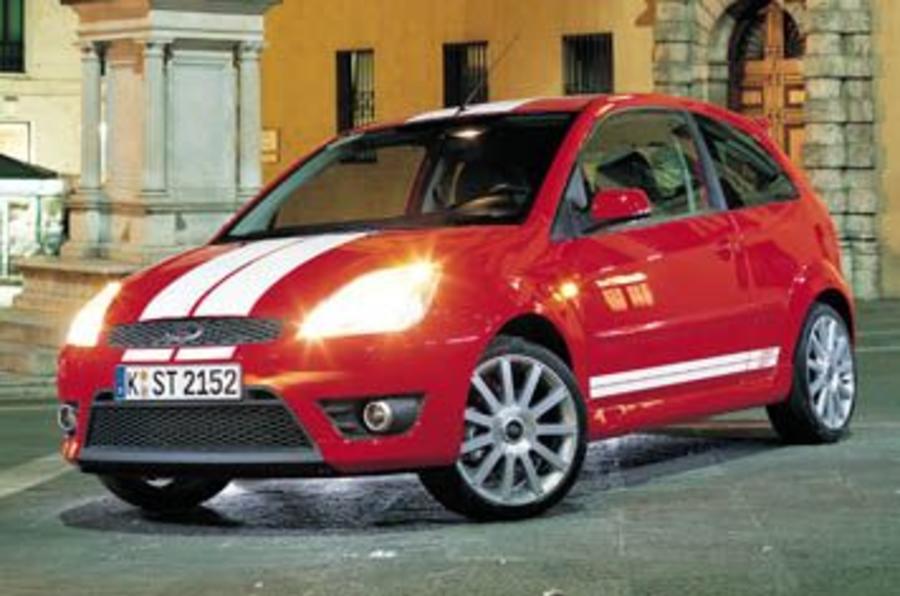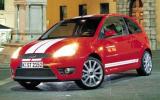Let’s talk extreme. In the circa £14k hot hatch sector, the idea is expressed in two contrasting but equally compelling ways. One is called the Renault Clio 182 Cup. The 182 Cup costs £13,800. For that you don’t get too much in the way of ‘fancy’. It’s unconcerned with designer details, its cabin is a tad plasticky. But it says ‘182’ on the tin and that’s exactly what you get: horsepower - delivered purely, simply and thrillingly. Only three things really matter with the Renault. It’s light, it’s powered by a 16-valve engine with genuine thump and its suspension encapsulates the sum of Renault’s knowledge in the field of handling and ride. Which is considerable. This car is so hot it’s almost on fire.
Then there’s the £14,014 Mini Cooper Works. Despite its fast name, the Cooper Works has a relatively modest 126bhp. But that doesn’t matter because it also has steering to die for. It guides the Mini with a level of directness and accuracy that simply takes your breath away. When it comes to changing direction, most other hot hatches feel tranquilised by comparison. Added to that, the Cooper Works has shedloads of grip, especially at the front. It means that wherever you point it, it goes with the maximum of fidelity and the minimum of fuss. True, there isn’t attitude adjustability in the sense that the Clio Cup has attitude adjustability, and when the grip does eventually run out it tends to do so a bit suddenly. But there is an underlying composure and precision that no other supermini has. Call it the Mini’s unique selling proposition, if you like. The Mini is undeniably special. As special, in its own way, as the Clio.
Envy Ford’s job trying to turn the Fiesta into a thunder-stealing rival? No, neither would we. But there’s a reputation to defend here, and Ford simply had to get involved. For two reasons. The old Fiesta XR2, which ceased production in 1993, was a big hit and has been much missed. And, with the Focus RS, many believe Ford crafted the greatest hot hatch in history. The boys know their stuff backwards, inside out and upside down. They’ve even formed a new Team RS department to apply it efficiently.
First fruit of this is the Fiesta ST, and to say it’s come out fighting is something of an understatement. Under the strap line ‘Bring It On!’ the £13,595 ST is described, on Ford’s dedicated sporty Fiesta website, as ‘tough, tasty-looking and driven to perform. Rock solid handling is in everything it does.’ Warming to the theme, the marketing pitch goes on to talk about setting the pulse racing, rally breeding and being built to tackle anything the road throws at it and come out on top.
Out in Tuscany, at the ST’s international launch, the sell from the attending Ford personnel is somewhat softer and couched in less bullish soundbites, ranging from ‘affordable fun’ to ‘an even mix of attributes’. But ‘an even mix of attributes’ won’t cut much ice in a sector that contains the outrageously talented Clio and Mini. So as we prepare to head for the Tuscan hills in the most fiery Fiesta, it’s with some of the bolder claims - ‘the ultimate in small car handling’ and ‘a Focus ST170-matching lap time’ round Ford’s Lommel test track – ringing in our ears.
Making the latest-generation Fiesta look even slightly angry can’t have been easy, but Ford is good at this sort of thing and has done a convincing job with the ST. The makeover comprises smart, multi-spoke 17-inch alloys wearing 205/40R17 Pirelli P Zero tyres, chunkier bumpers and sills, numerous stylised ST badges, a wider and deeper front grille and a particularly well-judged tailgate top spoiler. Not quite as subtle are the optional full-length bonnet/roof stripes and sill flashes on our red test car that appear to have been lifted wholesale from the Ford GT supercar but cost an entirely reasonable £150 and £75 respectively, or £200 for both. Red paintwork isn’t a personal favourite, but I’d be tempted by blue stripes on pearlescent white bodywork (there are five special ST colours in all).






























Add your comment